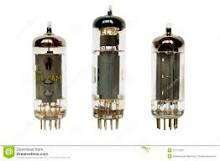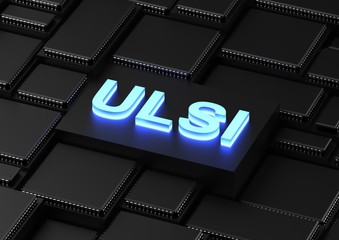There are different generations in our family. For example, our all grandparents (maternal, paternal or their concurrent) belong to one generation, our parents, uncles aunts belong to another generation and We, our siblings are of present generations. Mean to say the people of same time periods belong to one generation.
Similarly the computer which we operate now a days, were not the same as they were in the past, they were of different kinds or generations and gradual developments and modifications have given us our present computer. In order to gradual developments the computer passed through different phases and according to different phases we have categorized all the modern computers into five generations. These are :
- First Generation of Computers
- Second Generation of Computers
- Third Generation of Computers
- Fourth Generation of Computers and
- Fifth Generation of Computers
1. First Generation of Computers (1938-1955) : First generations of computers were very big in size and were extremely slow in performance. Vacuum Tubes were used as a major components. They also consumed lots of electricity. Paper tape and Punched cards were used as input/output devices and magnetic tapes and drums were used as memory. Machine language was used as programming language, They were highly error prone.
 |
| Vacuum Tube |
The first modern computer was made in 1939 by German Scientist Konard Zuse, It was known as Z2 but as it was having many drawbacks and extremely slow in operation so not meant to be sold to the public. The first computer was available for the public was UNIVAC made in 1951 and was continued to be used till 1970. This was also knows as Big pocket computer as it was very costly. Some other examples of first generations computer were
ENIAC (Electronic Numerical Integrator And Computer)
EDVAC (Electronic Discrete Variable Automatic Computer)
EDSAC (Electronic Delay Storage Automatic Computer)
UNIVAC (Universal Automatic Computer)
2. Second Generation of Computers (1955-1964) : Second generations of computers came in existence after the invention of Transistor. Here transistors were used as main components instead of vacuum tube.
 |
| Transistor |
The size of the computer was reduced but still it was very big, around half of your classroom. Magnetic tape and punched cards were used as input/output devices and magnetic core and disc were used as memory. These were reliable, faster and cheaper than the first generations of computers. Here Assembly Language was used as programming language. Assembly language was code written in human readable alphabet language instead machine language which was written in binary or hexadecimal character. Some examples of second generations computer are IBM 7000, IBM 605, Mark III.
3. Third Generation of Computers (1964-1975) : Third generation computer used Integrated Circuits, called ICs in place of transistor. A single IC has many transistors, resisters and capacitors along with attached circuit. Due to use of ICs the computer reduced in size, became more reliable, consumed less energy and was more efficient than its previous generations. In this generation multi programming operating system were used. High level language (COBOL, PASCAL, BASIC, FORTRAN etc) were used for programming.
 |
| Integrated Circuit (IC) |
IC was developed by Jack Kilby (an American electrical engineer). Later he was awarded with Nobel prize for his invention.
4. Fourth Generation of Computers (1975-1989) : Fourth generation of computers began with the invention of Microprocessor (also called CHIP), in 1971. The microprocessor was the result of the development of Large Scale Integrated Circuits (LSI) and very large scale integrated circuits (VLSI). Many LSI and VLSI were put together on a single chip that was called a Microprocessor.
 |
| Microprocessor |
With the use of microprocessor now computer is able to fit on a working table. It was more powerful, compact, reliable and affordable. Now PC revolution was rising up and adopting a PC at workplace was one of the most essential requirements for the companies. It was the time when two companies Apple and IBM emerged in the market along with INTEL. In 1981 IBM introduced its first PC for the home user and in 1984 Apple introduced the Macintosh. Due to competition between them the price of the computer came down and became more available for the general people.
5. Fifth Generation of Computers (1989-Present) : In 1990, Intel was able to make many products for microprocessors. The latest highly developed microprocessor was Pentium. Due to Pentium only operating systems like Windows, Macintosh were made possible. All credit goes to the Pentium processors, that made our computers very accurate and cheaper.
 |
| Ultra Large Scale Integration in 5th Gen Computer |
The fifth generation of computers is based on Artificial Intelligence. They use SLSI, ULSI (Super Large Scale Integrated Chips, Ultra Large Scale Integrated Chips). The main aim of 5th generation computer is to produce a computer with logic programming and can recognise voice, image and graphs etc.
Some examples of fifth generation of computers are Robot, Quantum Computer and Nano computers.
- DEFINITION AND KINDS OF COMPUTER
- HISTORY OF COMPUTER
- PCB
- PARTS OF COMPUTER SYSTEM
- STORAGE DEVICES
- INTRODUCTION TO HTML







No comments:
Post a Comment